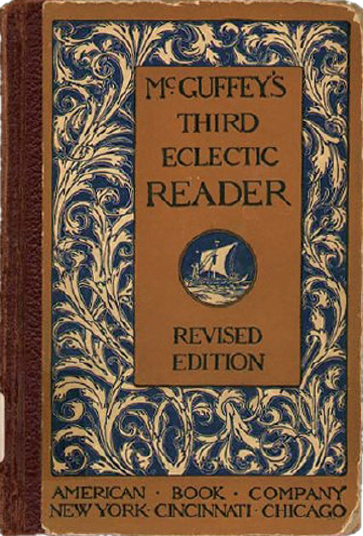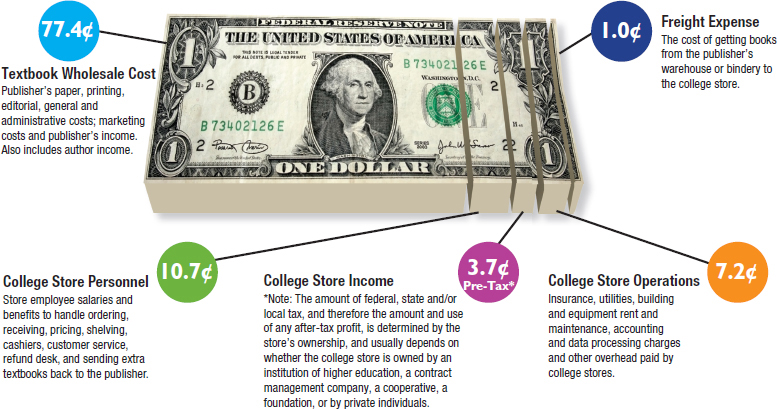Print Books
Printed Page 43
Today, the publishing industry produces titles that fall into a wide variety of categories—everything from trade books and textbooks to mass market paperbacks and reference books. These categories have been formally defined by trade organizations such as the Association of American Publishers (AAP), the Book Industry Study Group (BISG), and the American Booksellers Association (ABA).
Trade
One of the most lucrative markets in the industry, trade books include hardbound and paperback books aimed at general readers and sold at commercial retail outlets. The industry distinguishes between adult trade, juvenile trade, and comics and graphic novels (which contain pictures rather than type). Adult trade books include hardbound and paperback fiction; current nonfiction and biographies; literary classics; books on hobbies, art, and travel; popular science, technology, and computer publications; self-help books; and cookbooks. Juvenile book categories range from preschool picture books to young-adult or young-reader books, such as the Dr. Seuss books, the Lemony Snicket series, and the Harry Potter series.
Professional
Professional books target various occupational groups, not the general consumer market. This area of publishing capitalizes on the growth of professional specialization that has characterized the U.S. job market, particularly since the 1960s. Traditionally, the industry has subdivided professional books into the areas of law, business, medicine, and technology-science. These books are sold mostly through mail order, the Internet, or sales representatives knowledgeable about the various subject areas.
Textbooks
Textbooks such as The Eclectic Reader have served a nation intent on improving literacy rates and public education and are divided into elementary through high school (el-hi) texts, college texts, and vocational texts. In about half of the states in America, local school districts determine which el-hi textbooks are appropriate for their students. The remaining states, including Texas and California, have statewide adoption policies governing which texts can be used. Unlike el-hi texts, which are subsidized by various states and school districts, college texts are paid for by students (or their parents) and are sold primarily through college bookstores. The increasing cost of textbooks has led some students to trade, resell, or rent textbooks or to download them more cheaply from sites like Amazon.com or BarnesandNoble.com. For the 2007–08 school year, the average college student spent between $921 and $988 on textbooks and other required course materials.5 (See Figure 2.2 below.)

Mass Market Paperbacks
Unlike the larger-sized trade paperbacks, which are sold mostly in bookstores, mass market paperbacks are sold on racks in drugstores, supermarkets, and airports as well as in bookstores. Contemporary mass market paperbacks—often the work of blockbuster authors such as Stephen King, Danielle Steel, and John Grisham—represent the largest segment of the industry in terms of units sold. But because the books are low priced (under $10), they generate less revenue than trade books. Paperbacks first became popular back in the 1870s, when middle- and working-class readers popularized dime novels. In 1939, when publisher Pocket Books lowered the price of these books from fifty or seventy-five cents to just twenty-five cents by slashing costs such as author royalties, readers devoured even more of them.
A major innovation in mass market paperback publishing came with the instant book, a marketing strategy that involves publishing a topical book quickly after a major event occurs. Pocket Books produced the first instant book, Franklin Delano Roosevelt: A Memorial, six days after FDR’s death in 1945. However, these books suffer from the same problems that their TV counterparts do: Because these accounts are cranked out so quickly, critics have accused them of containing shoddy writing, exploiting tragedies, and lacking in-depth analysis and historical perspective.

Religious
The best-selling book of all time is the Bible, in all its diverse versions. Over the years, the success of Bible sales has created a large industry for religious books, and many religious-book publishers have extended their offerings to include serious secular titles on such topics as war and peace, race, poverty, gender, and civic responsibility. After a record year in 2004 (twenty-one thousand new titles), this category has seen a slight decline. Yet it continues to play an important role in the book industry, especially during turbulent social times.
Reference
Reference books include dictionaries, encyclopedias, atlases, almanacs, and volumes related to particular professions or trades, such as legal casebooks and medical manuals. Encyclopedias and dictionaries traditionally have accounted for the largest portion of reference sales. But these reference works have moved mostly to online formats since the 1990s in response to competition from companies offering different formats. These rival formats include free online or built-in word processing software dictionaries, search engines such as Google, and online resources like Wikipedia.
University Press
The smallest market in the printed-book industry is the nonprofit university press, which publishes scholarly works for small groups of readers interested in specialized areas such as literary theory and criticism, art movements, and contemporary philosophy. While large commercial trade houses are often criticized for publishing only high-selling, mainstream books, university presses often suffer the opposite criticism—that they produce mostly obscure books that only a handful of scholars read.